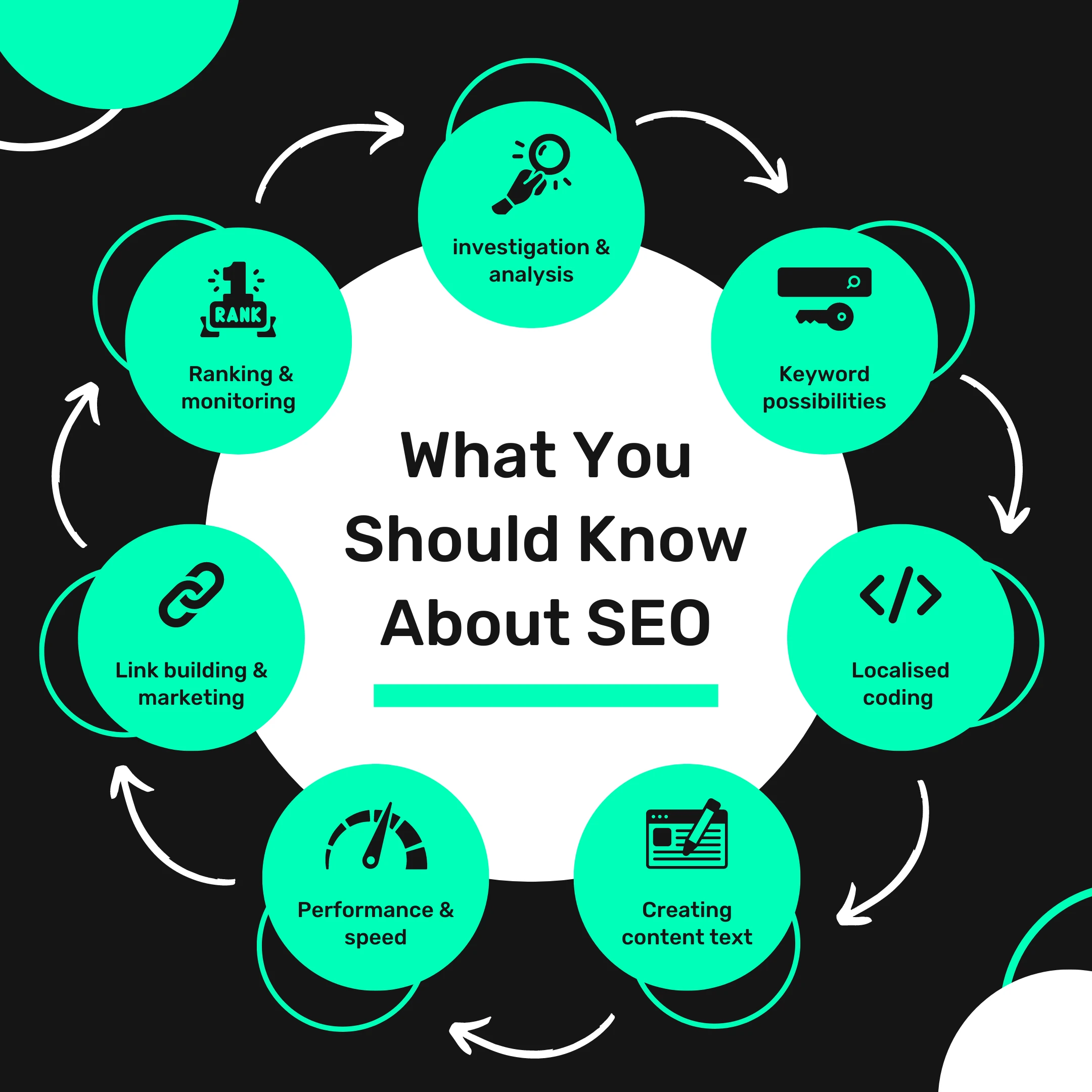

Are you looking to make the most out of your Google Ad campaigns? Choosing the right campaign type is crucial to achieving your marketing goals. With so many options available, it can be overwhelming to determine which campaign type is best suited for your business. That’s where our step-by-step guide comes in. In this comprehensive guide, we’ll walk you through the process of selecting the perfect Google Ad campaign type for your specific objectives. Whether you’re aiming to increase brand awareness, drive website traffic, or boost conversions, we’ve got you covered. We’ll discuss the various campaign types, their features, and how they align with different marketing goals. By the end of this guide, you’ll have the knowledge and confidence to launch an effective Google Ad campaign that delivers tangible results. Let’s dive in and take your marketing to new heights!
Before diving into the different Google Ad campaign types, it’s important to start by understanding your marketing goals. What are you trying to achieve with your ads? Are you looking to increase brand awareness, drive more traffic to your website, or generate more conversions? Defining your goals will help you determine which campaign type is best suited for your needs.
When setting your marketing goals, it’s crucial to make them specific, measurable, attainable, relevant, and time-bound (SMART). For example, instead of saying “I want to increase website traffic,” a SMART goal would be “I want to increase website traffic by 20% in the next three months.” This will not only give you a clear objective to work towards but also allow you to track and measure the success of your campaigns.
Once you have a clear understanding of your marketing goals, you can start exploring the different Google Ad campaign types and their features to find the perfect fit for your objectives. Let’s take a closer look at each campaign type and how they can help you achieve your goals.
Google Ads offers a variety of campaign types to suit different marketing goals. Each campaign type has its own unique features and targeting options. Understanding the purpose and functionality of each campaign type will help you make an informed decision when choosing the right one for your business. Let’s explore the main campaign types:
Search campaigns are the most common and widely used campaign type in Google Ads. They allow you to display text ads on the search engine results pages (SERPs) when users search for specific keywords related to your business. The goal of search campaigns is to drive targeted traffic to your website by capturing the attention of potential customers who are actively searching for products or services similar to what you offer.
Search campaigns offer various targeting options, including keyword targeting, location targeting, device targeting, and more. You can also set a maximum budget for your search campaign to control your ad spend and ensure you’re reaching your desired audience without overspending. Additionally, search campaigns provide valuable metrics and insights, such as click-through rate (CTR), conversion rate, and cost per conversion, which can help you optimize your ads for better results.
Display campaigns focus on increasing brand visibility and reach by showing visual ads across the Google Display Network (GDN), which consists of millions of websites, apps, and videos. These campaigns allow you to engage with your target audience through images, texts, and interactive ads, reaching potential customers while they browse their favourite websites or use mobile apps.
Display campaigns offer various targeting options, such as demographic targeting, interest targeting, topic targeting, and more. This allows you to reach a specific audience based on their interests, behaviour, and demographics. Display campaigns are a great choice if you’re looking to build brand awareness, promote new products or services, or reach a larger audience beyond the search engine results pages.
Video campaigns are designed to engage and capture the attention of your audience through video ads on YouTube and the Google Display Network. With the rise of video consumption, video campaigns have become an effective way to deliver your message in a visually compelling format. Whether you want to showcase a product demonstration, tell a story, or create brand awareness, video campaigns can help you achieve your goals.
Video campaigns offer various ad formats, such as skippable in-stream ads, non-skippable in-stream ads, bumper ads, and more. You can target your video ads based on demographics, interests, topics, and keywords to ensure they reach the right audience. Additionally, video campaigns provide valuable metrics, such as view rate, average view duration, and earned actions, which can help you measure the effectiveness of your video ads.
Shopping campaigns are specifically designed for e-commerce businesses to promote their products and drive sales. These campaigns allow you to showcase your products directly on the search engine results pages, making it easy for potential customers to discover and purchase your products. Shopping campaigns display product images, titles, prices, and other relevant information to attract shoppers and encourage them to click on your ads.
To set up a shopping campaign, you need to create a product feed in Google Merchant Center and link it to your Google Ads account. This feed contains all the relevant information about your products, such as product ID, title, description, price, and availability. Shopping campaigns offer various targeting options, such as product group targeting, custom label targeting, and more, allowing you to reach the right audience at the right time.
App campaigns are designed to drive app installs and engagement by promoting your mobile app across various Google platforms, including Google Search, Google Play, YouTube, and the Google Display Network. These campaigns help you reach users who are actively searching for apps or browsing relevant content on their mobile devices.
App campaigns simplify the process of promoting your app by using machine learning to optimize your ads for better performance. All you need to do is provide some text, a budget, and a starting bid, and Google Ads will automatically create and optimize your ads to drive the best results. App campaigns offer various targeting options, such as language targeting, location targeting, and more, allowing you to reach your desired audience effectively.
Now that we’ve explored the different Google Ad campaign types and their features, it’s time to compare them and determine which one is right for you. The best campaign type for your business will depend on your marketing goals, target audience, budget, and overall advertising strategy. If your goal is to drive targeted traffic to your website and capture the attention of potential customers who are actively searching for your products or services, search campaigns are a great choice. They allow you to reach a highly motivated audience and drive qualified traffic to your website. On the other hand, if you’re looking to increase brand awareness and reach a larger audience, display campaigns can help you achieve that. They allow you to showcase your ads on a wide range of websites and apps, ensuring your brand gets maximum exposure.
If you have visually compelling content and want to engage with your audience through video ads, video campaigns are the way to go. They allow you to deliver your message in a visually appealing format and capture the attention of your target audience. For e-commerce businesses looking to promote their products and drive sales, shopping campaigns are the perfect choice. They allow you to showcase your products directly on the search engine results pages, making it easy for potential customers to discover and purchase your products.
Finally, if you have a mobile app and want to drive app installs and engagement, app campaigns are the ideal option. They simplify the process of promoting your app and help you reach users who are actively searching for apps or browsing relevant content on their mobile devices.
Once you’ve chosen the right campaign type for your business, it’s time to set up your Google Ad campaign. The setup process may vary slightly depending on the campaign type, but the general steps are as follows:
It’s important to carefully consider each step of the setup process to ensure your campaign is optimized for success. Take the time to research your target audience, choose the right keywords, create compelling ad copy, and set realistic budgets and bids. Testing and refining your campaigns over time will help you achieve better results and improve your return on investment (ROI).
Once your Google Ad campaign is up and running, it’s crucial to track and measure its performance to determine its effectiveness and make data-driven optimisations. Google Ads provides a range of metrics and insights that can help you understand how your ads are performing and how they’re contributing to your marketing goals.
Some of the key performance metrics you should pay attention to include impressions, clicks, click-through rate (CTR), conversion rate, cost per conversion, return on ad spend (ROAS), and more. These metrics can give you valuable insights into the effectiveness of your ads, the quality of your traffic, and the return on your advertising investment.
In addition to the metrics provided by Google Ads, it’s also important to analyze other data sources, such as website analytics, to get a complete picture of your campaign’s performance. By tracking and measuring your campaign performance, you can identify areas that need improvement, make data-driven optimisations, and ultimately achieve better results.
Optimising your Google Ad campaign is an ongoing process that involves testing different strategies, making data-driven decisions, and continuously improving your ads for better results. Here are some optimization tips to help you get started:
By consistently optimizing your Google Ad campaign, you can improve its performance, increase your return on investment, and achieve your marketing goals more effectively.
Choosing the right Google Ad campaign type is crucial to achieving your marketing goals. Understanding your objectives, exploring the various campaign types, and considering their features and functionality will help you make an informed decision. Whether you’re aiming to increase brand awareness, drive website traffic, promote products, or drive app installs, Google Ads offers a campaign type that aligns with your goals.
Remember, the success of your Google Ad campaign doesn’t end with choosing the right campaign type. Setting up your campaign correctly, tracking and measuring its performance, and optimizing it over time are equally important. This article shows an overview of the process of choosing the right Goggle ad campaign type for promoting your business. To be honest, it can be an overwhelming and time-consuming process for a business owner to work on Google ad campaigns. So, LeadOn Design as a digital marketing agency in Australia will provide you with the best strategies to get satisfying results.


